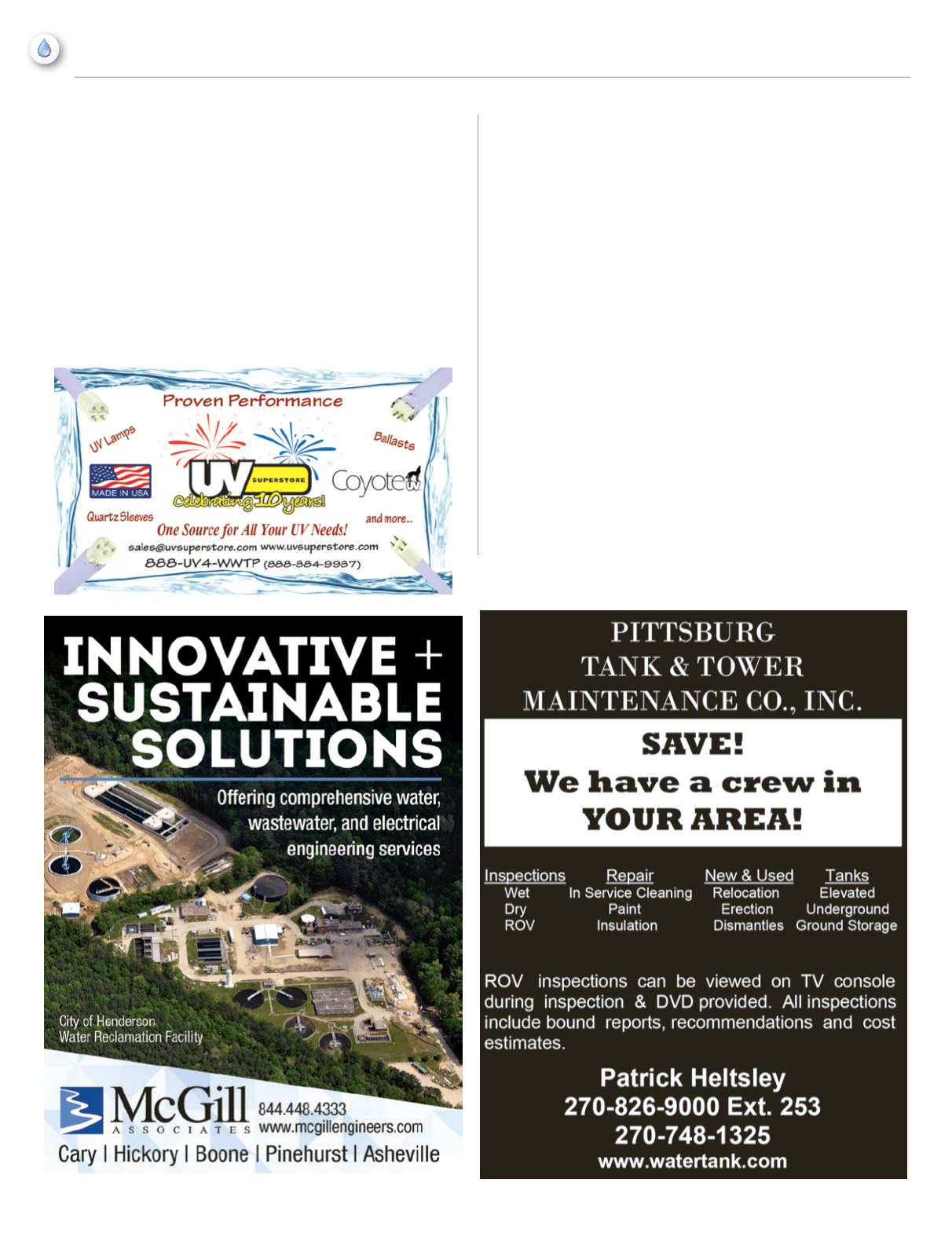

12
NCRWA.COM|
Winter 2015
feature
By charging based on meter size, the normal household (
5
/
8
” x
3
/
4
”) is
charged at whatever your monthly minimum is, let’s say $24.00. If a
customer has a full ¾ inch meter it would be $36.00 monthly minimum,
up to the 2 inch meter which would be a monthly minimum of $192.00.
By using the correct meter equivalent, the customers with larger meters
end up paying for the full capacity the system has to maintain. A 2 inch
meter would count as eight customers and a water system is expected to
have the required capacity to supply these larger meters. So instead of
maintaining 200 gallons of storage tank capacity for a normal household
meter, the system would have to maintain 1,600 gallons of storage tank
capacity for a customer with a 2 inch meter. This carries over to ground
storage tanks, pressure tanks, and pumping capacities also.
Another option would be to switch to a remote read technology or
Automatic Meter Reading (AMR). Whether it is due to adverse weather,
such as hurricanes or tornados, or the systems have meters in areas that
are difficult to read due to aggressive animals or barbed wire fences,
many water systems are moving towards these new technologies. These
innovations have made it as easy as driving by the house to collect the
system’s meter readings. It has also made it easier on the office staff
by generating computerized information on the customers’ day to day
usage, making it easier to track and reference. Digitized information
makes it difficult for the customer to refute usage and charges when
office staff can look up the exact day and time the water was used from
one sample meter reading.
Increasing revenues for a water system in these hard economic times is
not easy, and sometimes you have to spend money to make money. A
meter replacement program does cost money, but the investment will
be returned by the properly working meter in the long run. Forward
thinking systems can replace meters through their rates if they depreciate
the cost of the meters over the 10 year replacement period. The meter
equivalents will also increase revenues for systems that are not using
them at this time. In the long run, if you take care of your cash register
and keep it working properly it will take care of you.
















